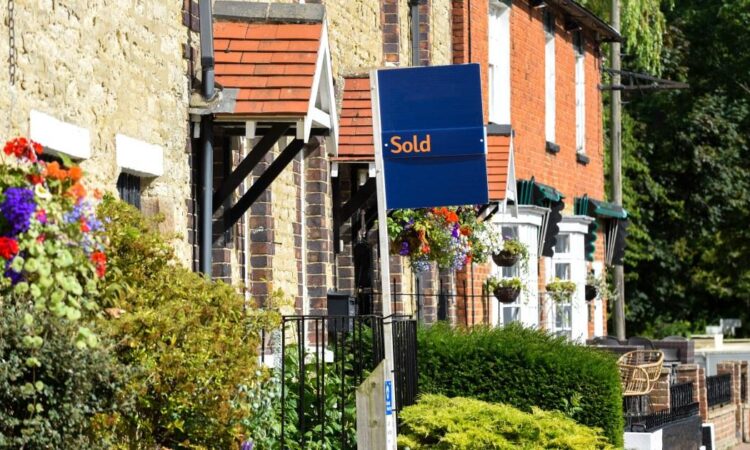

New research has revealed that overlooked internal and external issues, from damp to noisy neighbours, can significantly slash home values.
In today’s buyers’ market, where house prices often stagnate or fall in pockets across the UK, sellers are grappling with unprecedented challenges: the competition is fierce, buyer expectations have shifted, and the smallest home flaws can now wield oversized influence over sale prices.
Newly released research by Springbok Properties exposes a stark truth: seemingly minor issues — both inside and outside a property — can chisel as much as £40,000 off what buyers are prepared to pay.
For many selling their home, understanding these ‘turn-offs’ isn’t just useful — it’s essential.
Inside the home
When buyers step inside a home, first impressions can swiftly tip the scales. Springbok Properties’ recent research highlights that certain interior flaws are significant red flags, despite their often manageable nature.
Chief among these is damp or mould, a problem that instantly rings alarm bells over a property’s structural health and indoor environment. For prospective buyers, damp not only signals potential repair costs but raises concerns about long-term wellbeing.
Yet mould isn’t the only interior issue costing sellers thousands. The research points to cramped rooms that feel claustrophobic, awkward or inefficient layouts, and strong odours — whether from pets, smoke, or cooking — acting as sizeable turn-offs.

Such sensory experiences can trigger subconscious aversion, making buyers reluctant to pay full asking price.
Outdated décor or poorly executed conversions also spare no mercy when it comes to valuations. Missed opportunities to modernise or carefully adapt spaces can send buyers scurrying.
Interestingly, highly personalised interior choices — think themed rooms or taxidermy mounts — often unnerve buyers, creating an emotional disconnect that’s hard to bridge.
These findings echo earlier research by various estate agents, which similarly underscored damp, mould and bad smells as consistent deal breakers across UK properties — along with mouse traps, peeling plaster and unkempt gardens.

Outside the home
According to Springbok’s CEO Shepherd Ncube, sellers often underestimate just how much the neighbourhood and surroundings weigh on buyers’ minds.
Leading the external list is high local crime. Safety remains a non-negotiable concern, significantly deterring interest and necessitating cautious pricing strategies.
Noisy neighbours come next, followed by practical concerns: insufficient parking can feel like a deal breaker in towns and villages where street space is tight.

Busy roads feeding continuous traffic, run-down neighbouring homes, and proximity to airports or train lines serve as additional deterrents that erode perceived value.
One surprising yet socially topical factor making waves in the data is the prevalence of excessive flags flying near a home — be they political, religious, or otherwise.
This phenomenon has been a hot topic of conversation recently, with the St George’s Cross being displayed all over England in recent weeks.
Metro columnist Nadeine Asbali explained why her neighbour’s England flag made her feel uneasy.
‘A neighbour put up an England flag and I reconsidered our relationship’
‘It feels like the flag has gone from a symbol of patriotism and national pride, especially during times like the World Cup, to being adopted instead by those who want a version of Britain where people like me simply don’t exist.
‘In that context, putting a flag on your car or home or outside your shop – or sticking it on your local lamp post – feels like a direct message to those of us who don’t fit the white-British box: That we are unwelcome here.’
And visible displays of identity or allegiance can alienate a portion of potential buyers, diminishing appeal in a market sensitive to social signalling.
Further external irritants include aggressive neighbouring pets, and the proliferation of short-term rentals like Airbnbs that may signal transience and instability.
Would you buy a home if the neighbours had a flag outside?
Beyond the obvious emotional strain, ignoring these interior and exterior deterrents carries a tangible financial penalty.
Properties with unresolved mould, layout problems, aggressive animals next door, or community disturbances have been shown to sell for tens of thousands less than their expected valuation, according to Springbok Properties.
In a market still recovering from recent turbulence, strategic awareness of such ‘turn-offs’ can be the difference between a seamless sale and long delays — and, ultimately, between profit and loss.
For today’s home sellers, the message is clear: a deeper understanding of buyer sensitivities, paired with practical improvements, is no longer optional. It is a crucial tool that can protect value, accelerate sales, and reduce costly surprises in an unforgiving marketplace.
MORE: Map reveals areas where it’s easiest to save for a house deposit in the UK
MORE: Britain’s smallest castle hits the market for £330,000 — with one unique feature
MORE: Charming Essex location sees house price surge as demand for market towns grows




